

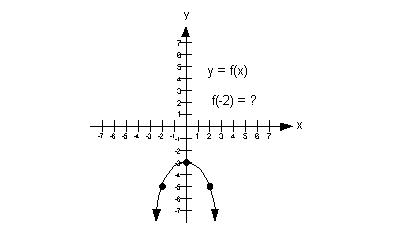
Since that is the case, we need to look to the left and
right and see
if there are any end points. In
this case, note how there are arrows on both ends of the graph and
no end points. This means that the graph goes on and on forever
in
both directions.
This means that the domain is ![]() .
.
Since that is the case, we need to look up and down and see if there are any end points. In this case, note how the graph has a upper endpoint of y = -3 and it has arrows going down from that.
This means that the range is ![]() .
.
If you said there is none, you are right.
Since the graph never crosses the x-axis, then there is no x-intercept.
If you said y = -3 you are correct.
The ordered pair for this y-intercept would be (0, -3).
If you said f(-2) = -5 , then give yourself a pat on the back. The functional value at x = -2 is -5.
The ordered pair for this would be (-2, -5).
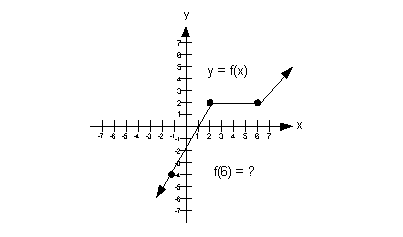
Since that is the case, we need to look to the left and right and see if there are any end points. In this case, note how there are no endpoints and the graph goes on and on forever in both directions.
This means that the domain is ![]() .
.
Since that is the case, we need to look up and down and see if there are any end points. In this case, note how there are no endpoints and the graph goes on and on forever in both directions.
This means that the range is ![]() .
.
If you said x = 1 you are correct.
The ordered pair for this x-intercept would be (1, 0).
If you said y = -2 you are correct.
The ordered pair for this y-intercept would be (0, -2).
If you said f(6) = 2 , then give yourself a pat on the back. The functional value at x = 6 is 2.
The ordered pair for this would be (6, 2).
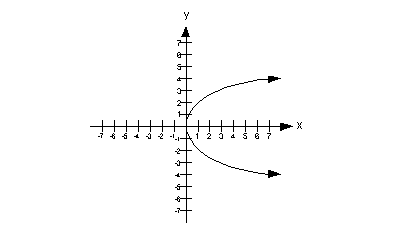
The graph below shows one vertical line drawn through our graph that intersects it in two places: (1, 2) and (1, -2). This shows that the input value of 1 associates with two output values, which is not acceptable in the function world.
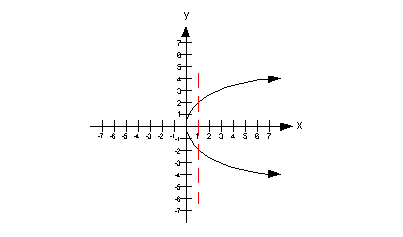
Therefore, this is not a graph of a function.
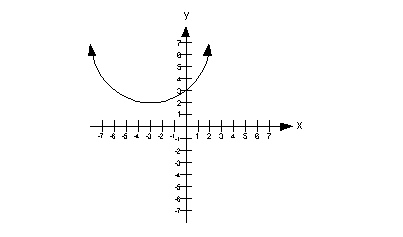
Therefore, this is a graph of a function.
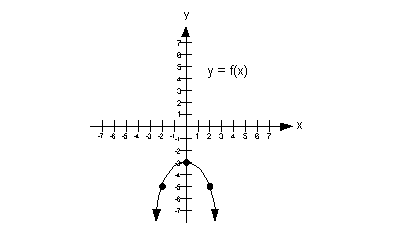
If you said ![]() ,
you are correct.
,
you are correct.
Note how the function is going up left to right, from
negative infinity
to x = 0.
Below shows the part of the graph that is increasing:
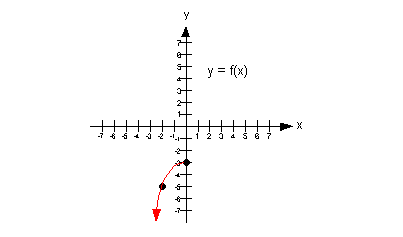
If you said ![]() ,
you are right on.
,
you are right on.
Note how the function is going down left to right
starting at x =
0 and everywhere to the right of that.
Below shows the part of the graph that is decreasing:
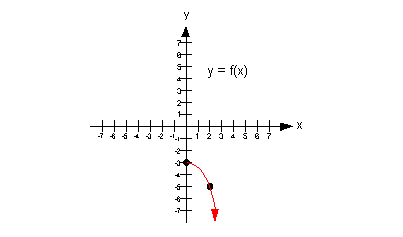
If you said it is never constant, pat yourself on the back.
Note how the function is never a horizontal line.
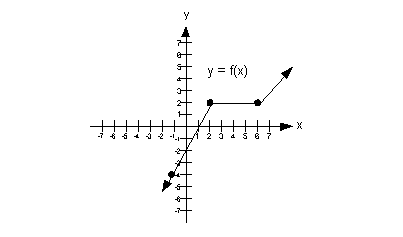
If you said ![]() or
or ![]() ,
you are correct.
,
you are correct.
Note how the function is going up left to right, from
negative infinity
to x = 2 and also starting at x = 6 and everywhere to the right of that.
Below shows the part of the graph that is increasing:
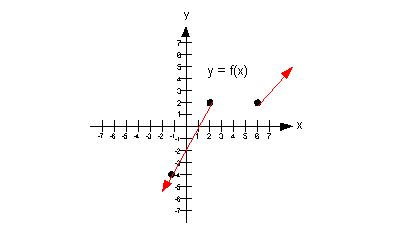
If you said that it was never decreasing you are right.
The graph never goes down left to right.
If you said (2, 6), pat yourself on the back.
Note how the function is horizontal starting at x = 2 all the way to x = 6.
Below shows the part of the graph that is constant:
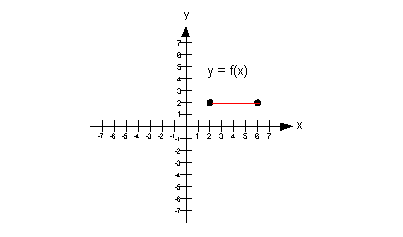

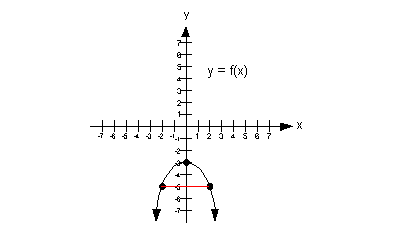
Do you know what that means?
It means that this function is even.

Do you know what that means?
It means that this function is neither even nor odd.
![]()

If you said no, you are
correct. Note how
both of their terms have opposite signs, so ![]() .
.
If you said yes, you are
right.
Looking at ![]() ,
note how all of the terms of f(-x)
and -f(x)
match up, so
,
note how all of the terms of f(-x)
and -f(x)
match up, so ![]() .
.
Final answer: The function is odd.
![]()

If you said yes, you are
correct. Note how
all of the terms of f(x)
and f(-x) match up, so ![]() .
.
Final answer: The function is even.
![]()

If you said no, you are
correct. Note how
their second terms have opposite signs, so ![]() .
.
If you said no, you are
right.
Looking at ![]() ,
we see that the signs of the first terms of f(-x)
and -f(x)
don’t
match, so
,
we see that the signs of the first terms of f(-x)
and -f(x)
don’t
match, so ![]() .
.
Final answer: The function is neither even nor odd.
f(-9.1)
If you said -10, you are correct.
Be careful on this one. We are working with a negative number. -9 is not a correct answer because -9 is not less than or equal to -9.1, it is greater than -9.1.
Final answer: -10
Last revised on June 18, 2010 by Kim Seward.
All contents copyright (C) 2002 - 2010, WTAMU and Kim Seward. All rights reserved.